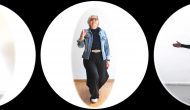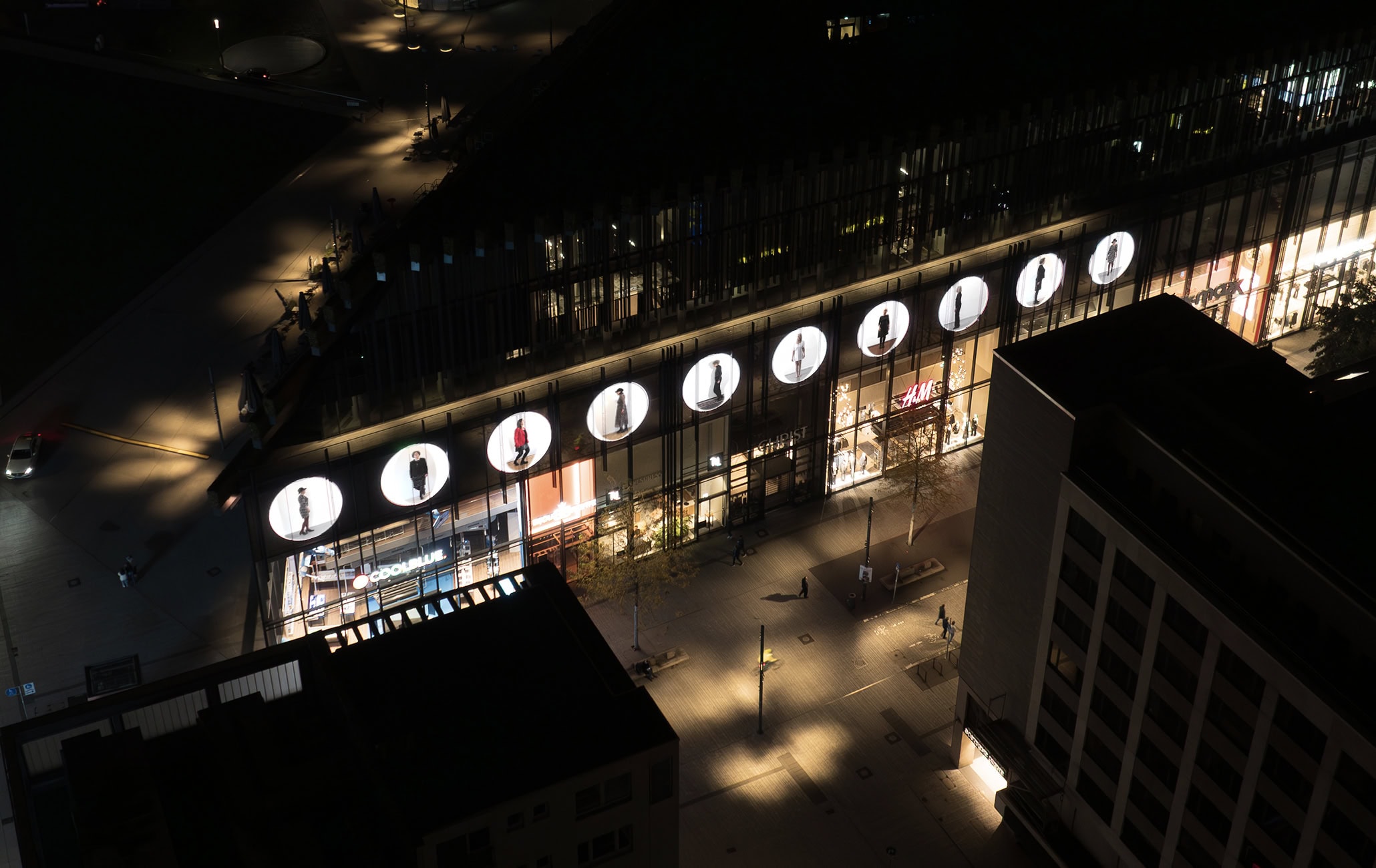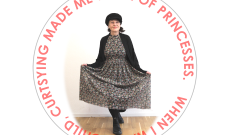I STILL HAD TO CURTSY, UHD video, adapted for LED wall, 2025, 2:50, silent. Women curtsy in memory of this childhood obligation. But the position of the video high above the heads of the audience reverses the perspective.
Since 2024, Düsseldorf Marketing GmbH has been showing a video artwork every evening from 8 to 11 pm on the large LED screen on Schadowstraße, which is used for advertising during the day. The video artworks change monthly. Curator: Ljiljana Radlovic.
Until the early 1970s, it was customary for girls in Germany and Austria to show respect to older people by curtsying. However, what was considered a polite gesture was experienced by many as coercion – an act of subordination that placed female children in a position of double dependency: they were neither adults nor male. Myriam Thyes filmed women who had this experience in their childhood. Each of them demonstrates a curtsy in their own typical manner. In the LED video installation, the recordings appear side by side, supplemented by short texts with the women’s memories – sometimes positive, sometimes critical. In this way, Thyes reveals the ambivalence of this gesture: it was an expression of respect, but also an instrument for practising humility and hierarchy. At the same time, it becomes clear how deeply such physical rituals can affect our self-image – between posture, conformity and self-alienation. In I still had to curtsy, the once humiliating compulsion is transformed into an artistic act of liberation. Thyes makes it clear how much social conventions shape our bodies – and how art makes such influences visible and open to question. The reflection on this education in politeness through curtsying is not only an artistic documentary act in the work, but also a liberation through deconditioning, and is exemplary for the abolition of similar formalities that, in the course of distinctions, present people – and thus also women – as unequal.
Thomas W. Kuhn, 2025
Links
Videos
-
 I Still Had to Curtsy, version for LED wall, 2025
By clicking the image or video link you accept the Vimeo privacy policy.
I Still Had to Curtsy, version for LED wall, 2025
By clicking the image or video link you accept the Vimeo privacy policy.
-
 I Still Had to Curtsy @ Take A Bow, documentation
By clicking the image or video link you accept the Vimeo privacy policy.
I Still Had to Curtsy @ Take A Bow, documentation
By clicking the image or video link you accept the Vimeo privacy policy.






